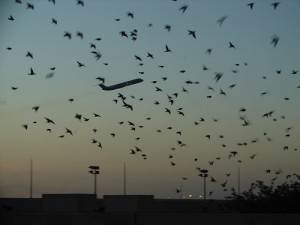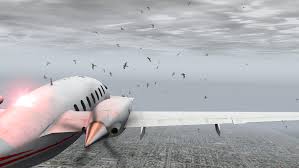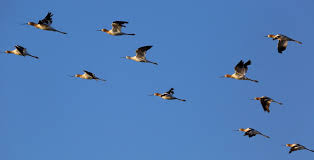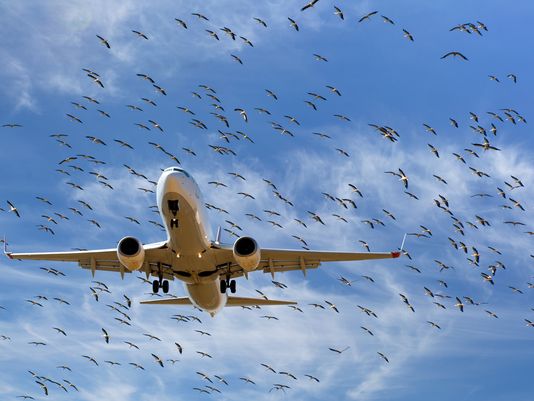Newsletter Summer 2016 – Collision of Birds and Aviation – Part 2
Collision of Birds and Aviation – Part 2
Airport operator liability for damage caused by a bird strike
 The international sources do not regulate the subject of airport operator’s liability, i.e. if the airport operator is responsible on the basis of objective or subjective principle. Legal theory and judicial practice disagree on this issue. In case the airport operator is responsible on principle of subjective liability, the carrier must prove presence of general conditions for liability like: damage event, loss and cause-and-connect connection between damage event and loos, while he has not to prove the airport operator guilt. In case of subjective responsibility of airport operator for damage caused by a bird strike, it is assumed that the airport operator contributed to occurrence of damage by negligence. Burden of proving a greater degree of responsibility is on the carrier. On the other hand, airport operator in order to be exempted from liability on subjective principle must prove that he is not guilty for the damage, i.e. that he took all available measures to prevent or reduce presence of birds in airport area.
The international sources do not regulate the subject of airport operator’s liability, i.e. if the airport operator is responsible on the basis of objective or subjective principle. Legal theory and judicial practice disagree on this issue. In case the airport operator is responsible on principle of subjective liability, the carrier must prove presence of general conditions for liability like: damage event, loss and cause-and-connect connection between damage event and loos, while he has not to prove the airport operator guilt. In case of subjective responsibility of airport operator for damage caused by a bird strike, it is assumed that the airport operator contributed to occurrence of damage by negligence. Burden of proving a greater degree of responsibility is on the carrier. On the other hand, airport operator in order to be exempted from liability on subjective principle must prove that he is not guilty for the damage, i.e. that he took all available measures to prevent or reduce presence of birds in airport area.
In the international air law there is no regulation that stipulates liability for damage caused by a collision of birds and aircraft: for the damage caused by a bird strike, there will be applied provisions of the Law on obligations of the international jurisdiction court or the Law on obligations of the country indicated to by conflict-of-law norms of the international jurisdiction court.
In case of an strict liability of airport operator for damage caused by a bird strike, it is exclusively upon the carrier to prove cause-and-effect connection between damage event and loss, as well as its amount.
In case of strict liability for damage, it is not justified to apply the absolute causality criterion, according to which the carrier should prove exclusively the damage event and loss, while the airport operator is deprived of all defensive acts to exclude the liability. In other words, the airport operator could not call into evidence that the damage resulted from force majeure, fault of the airline or a third party.
Airport operator’s area of liability for damage caused by birds strike
Carrier/insurer is actively identified party in case of damage caused by a collision of birds and wildlife with aircraft, while proper identification of passively identified party/parties will depend on several criteria:
- venue of the collision,
- moment of collision of a bird and aircraft (at airport, in its vicinity, out of airport),
- extent and amount of suffered loss,
- consequences of a collision to safety of next flight,
- activities taken by participants in air traffic, i.e. the activities on monitoring seeing the birds, scattering the birds or reducing their population in airport area, being taken permanently or before a damage occurrence.
Most collisions of birds and aircraft occur on front part of aircraft (nose, wings and engines), and least strikes occur on the rear, tail part of aircraft. Question at issue, in terms of space, is in which area the airport operator is responsible for safety of aircraft, i.e. for its safe take-off and landing.
ICAO in its document ICAO Doc 9332 Manual on the ICAO Bird Strike Information (IBIS) stipulates that bird strikes happened in airport area if they occurred during landing at the height of 200 feet, i.e. 61 metres above the ground, or during take-off at the height of 500 feet, i.e. 153 metres above the ground, or they happened during take-off or landing, taxiing on the runway or parking of the aircraft.
In vicinity of airport collisions of birds and aircraft happen during approach of a aircraft to destination airport, at the height of 201 to 1000 feet, i.e. from 62 to 305 metres above the ground, and during aircraft way up, the strikes happen at the height of 501 to 1.500 feet, i.e. from 154 to 457 metres.
Out of airport are collisions of birds and aircraft that happen during approach stage, at the height above 1.000 feet, i.e. 305 metres, and during the aircraft’s way up, at the height of more than 1.500 feet, i.e. over 457 metres.
 Collisions of birds and aircraft that happen in vicinity of airport and out of it can be subsumed under the force majeure what is visible according to interpretation of ICAO recommendation according to which the airport operator cannot be responsible for collision of birds and aircraft in vicinity of the airport and out of it. One can question what ICAO Doc 9332 Manual on the ICAO Bird Strike Information (IBIS) actually is. Annexes to Chicago Convention are standards and recommended practices as minimum requests that member countries are obliged to implement. Supporting documents of ICAO are recommendations that are not obliging for the countries, but may be a guiding principle at courts that establish a liability of airport operator for a damage event. Airport operator may take active measures for prevention of bird strikes exclusively within the airport’s parameter fence. However, according to ICAO recommendation, using the height criterion for establishing if a bird strike has happened at the airport, in its vicinity or out of it, events that happen at the airport may, in practice, also include bird strikes that happen out of the airport protective fence.
Collisions of birds and aircraft that happen in vicinity of airport and out of it can be subsumed under the force majeure what is visible according to interpretation of ICAO recommendation according to which the airport operator cannot be responsible for collision of birds and aircraft in vicinity of the airport and out of it. One can question what ICAO Doc 9332 Manual on the ICAO Bird Strike Information (IBIS) actually is. Annexes to Chicago Convention are standards and recommended practices as minimum requests that member countries are obliged to implement. Supporting documents of ICAO are recommendations that are not obliging for the countries, but may be a guiding principle at courts that establish a liability of airport operator for a damage event. Airport operator may take active measures for prevention of bird strikes exclusively within the airport’s parameter fence. However, according to ICAO recommendation, using the height criterion for establishing if a bird strike has happened at the airport, in its vicinity or out of it, events that happen at the airport may, in practice, also include bird strikes that happen out of the airport protective fence.
In terms of ICAO recommendation, proclaiming the airport operator responsible for damage events that happened in vicinity of airport or out of it, seems to be unjustified in terms of language interpretation, too. It is beyond question that, in case of a bird strike within the perimeter protective fence, the airport operator will be passively identified party.
Since the airport operator cannot take active measures but exclusively passive ones to prevent bird strikes out the protective fence, one cannot declare as such that the operator responsible for damage incident that happened out of the airport complex perimeter, even if the incident occurred at the height which, according to ICAO recommendation, is considered as the air space for which the airport operator is responsible for.
Air traffic control centre’s liability for damage caused by a bird strike
Air traffic control centre is responsible for organization and coordination of air traffic at airport, i.e. prior to aircraft landing and take-off, its movement on maneuvering surfaces, flying in vicinity of airport, in a way to give pilots instructions and orders during final approach to the destination airport and during a take-off.
In accordance with a flight plan, Air traffic control centre issues the carrier a take-off approval. Sequence of take-offs and landings is defined by the Air traffic control centre, which is responsible for prevention of mid-air collisions of aircraft but also of possible bird and wildlife strikes. The Centre is authorized to suspend take-offs and landings in case of intensified bird activity at the airport or its vicinity. Liability of the Air traffic control centre, or air traffic controller, is subjective, what means that in case of a damage incident caused by a bird strike in the airport area, in terms of ICAO recommendation, the liability of the Centre will based on a presumed guilt. On the other hand, the Centre of air traffic control gives directions to the aircraft crews in the airport area and its vicinity, and is responsible for safe taxiing of aircraft on the runway, taxiways, platform, as well as for safe landing and take-off at the airport. Flying aircraft is a dangerous issue and giving guidance to the crew in airport area or its vicinity is like an indirect steering, and such makes a base for establishment of strict liability for the damage. However, it is commonly acceptable that the Centre’s liability is subjective, because the Centre for air traffic control is responsible exclusive for instructing the pilots who make final decisions how to steer the aircraft, which is, in terms of the law, a dangerous issue.
 Air traffic controllers work in the airport tower from which they have the best view of the manoeuvering surfaces at the airport and out of it. Having that in mind it seems quite justified not to connect the air traffic control centre’s responsibility to the interior protective fence of the airport but to the height at which a bird strike occurred. The Centre’s liability for the damage caused by a bird strike is primarily related to the airport area, as compliant with ICAO recommendation, i.e. to landing or take-off, taxiing on the runway or parking, and it goes up to the height of 153 metres (500 feet) during take-off, and to 61 metres (200 feet) above the ground during landing.
Air traffic controllers work in the airport tower from which they have the best view of the manoeuvering surfaces at the airport and out of it. Having that in mind it seems quite justified not to connect the air traffic control centre’s responsibility to the interior protective fence of the airport but to the height at which a bird strike occurred. The Centre’s liability for the damage caused by a bird strike is primarily related to the airport area, as compliant with ICAO recommendation, i.e. to landing or take-off, taxiing on the runway or parking, and it goes up to the height of 153 metres (500 feet) during take-off, and to 61 metres (200 feet) above the ground during landing.
As a rule, the passively identified party is primarily the airport operator, but there may be a joint and several liability for the damage of the airport operator, the state or the government agency to which the Centre belongs, and in case that the carrier carrier /its insurer has compensated the damage either from the airport operator or the state that owns the Air traffic control centre, each of the mentioned parties will be able to claim a regress compensation for damage, in proportion with other legal entity’s participation in the damage incident.
Air traffic control centre may exclude or reduce its liability for damage if it proves that the carrier disobeyed its instructions. In terms of ICAO recommendation, the Air Traffic Control Centre cannot be liable for the damage caused by a bird strike near or outside the airport.
Can the subjective liability of the airport operator for damage caused by bird strike be excluded?
The airport operator and Air traffic control centre cannot, in general, be responsible for the damage caused by bird strikes that occurred in vicinity of the airport or out of the airport area. Such bird strikes are considered a force majeure.
According to implementation of subjective liability for damage, the airport operator is not responsible for the damage caused by a bird strike if he proves that he had taken all reasonable measures and activities being at disposal in order to avoid possible bird strikes, or if he proves that taking such measures and activities was not possible at all for safety reasons.
The question arises how to treat, in terms of law, the ICAO documents that set up measures to be implemented by airport operator in order to reduce threat of bird strikes at airport area. ICAO documents are more scientific publications than legally obliging documents; only after being incorporated into national legislation these documents have their legal value. ICAO safety documents are usually not incorporated into domestic law, ICAO documents are guidelines to courts and often a legal basis in establishing one has taken all the measures to reduce or eliminate bird strikes within airport complex.
ICAO Doc 9137 Airport Service Manual, Part 3. Wildlife Control and Reduction suggests countries to oblige airport operators to establish a Wildlife control program that should give answers to the following questions:
- Did the airport operator appointed a person in charge of wildlife control at the airport?
- Is there a plan for use of land at the airport and around it and does it make a constituent part of the Program of wildlife management at the airport?
- What environmental protection measures have been taken to reduce the wildlife population at the airport and in its vicinity?
- Is there a program for management of wildlife habitats at the airport area?
- Have the waste dumps around the airport been forbidden? If so, what is the distance from the airport where the dumps have been forbidden?
- Is the perimeter fence around the airport adequate to prevent penetration of the wildlife to the airport complex?
- What techniques does the airport apply to scatter the wildlife?
- Does the airport have the staff in charge of scattering the birds and wildlife at the airport?
If the airport answers in an affirmative way to those questions, he might be able to exclude or reduce its liability for the damage caused by bird or wildlife collisions within the airport.
Can the strict liability of airport operator for the damage caused by bird strikes be excluded?
It is unjustified to declare the airport operator responsible for the damage caused by bird strikes out of the airport protective fence, but also within the airport in terms of ICAO recommendation, since the airport cannot take active measures for prevention of bird strikes out of its perimeter fence. In case of implementation of strict liability for damage, airport operator may be released from responsibility for the damage caused by bird strikes within the airport protective fence if he manages to prove that the damage is a consequence of force majeure (unpredictable behaviour of birds), action or omission of Air traffic control centre, or by action of the loss sufferer (actions of airline contrary to instructions of the Air traffic control centre). In addition, if the principle of strict liability is implemented, the airport operator will be able to exclude or reduce his liability for damage, even if he did not take all the measures stipulated by positive legislation and fulfil all the standards and recommendations of the international civil aviation organizations in case of adverse weather conditions not compatible with bird behaviour that can become unpredictable.
 To be able to ascertain unusual behaviour of birds, the airport operator must have an ornithology study that contains kinds and common behaviour patterns of birds and wildlife within the airport and in its vicinity, or well-documented zones of bird and wildlife routes at the airport and in its vicinity, that are based on long-term monitoring of bird behaviour of expert services of the airport operator. Only in case of having the ornithology study or well-documented evidence of bird and wildlife routes at the airport and in its vicinity, the airport operator may exclude or reduce his liability for the damage caused by bird strikes at the airport area, within its perimeter fence and out of the fence, but at the airport area in terms of ICAO recommendation, in case of unpredictable behaviour of birds, he can be excluded even he did not take all the measures set up in positive legislation and recommended standards and practice of the international civil aviation organizations.
To be able to ascertain unusual behaviour of birds, the airport operator must have an ornithology study that contains kinds and common behaviour patterns of birds and wildlife within the airport and in its vicinity, or well-documented zones of bird and wildlife routes at the airport and in its vicinity, that are based on long-term monitoring of bird behaviour of expert services of the airport operator. Only in case of having the ornithology study or well-documented evidence of bird and wildlife routes at the airport and in its vicinity, the airport operator may exclude or reduce his liability for the damage caused by bird strikes at the airport area, within its perimeter fence and out of the fence, but at the airport area in terms of ICAO recommendation, in case of unpredictable behaviour of birds, he can be excluded even he did not take all the measures set up in positive legislation and recommended standards and practice of the international civil aviation organizations.
A bird strike that happens within the perimeter fence can be considered a force majeure if caused by natural factors, i.e. weather conditions, unpredictable and unexpected circumstances, i.e. that would have happened even if all stipulated and recommended measures had been taken.
* * *
Birds are one of the biggest danger in nature for safe flights. Bird strikes may cause significant damage both on aircraft and on the ground, including damage of buildings and infrastructure and consequential damage, such as death or injuries and fear suffered by passengers and crew members, or persons on the ground in case of air crash. In international private law there is not a single unification instrument that stipulates liability for the damage caused by bird strikes, so that the carrier/its insurer will, as a rule, claim damage compensation from airport operator in accordance with provisions of substantive law of the international jurisdiction court or the substantive law indicated to by conflict-of-law norms of the international jurisdiction court, while the passenger in international air transport will claim damage from the airline in compliance with provisions of the Warsaw system or Montreal Convention. In case of air crash due to a bird strike, persons on the ground will claim damage from the carrier or in accordance with provisions of the Rome Convention modified by Montreal protocol 1988. Most bird strikes occur in the airport area or in its vicinity. The Airport operator is primarily responsible for bird strikes in the airport.
The Airport operator is not subjectively responsible for the damage caused by a bird strike within the perimeter fence of the airport if he proves that he has taken all available measures and activities, reasonable to expect and request from him in order to prevent possible bird strikes, or if he proves that undertaking of such measures was not possible under any circumstances.
In implementation of subjective liability for damage, taking passive measures in accordance with positive legislation and ICAO recommendations, is a base for exclusion of airport operator from liability for the damage caused by bird strikes that, in terms of space, happened outside the perimeter fence.
Implementation of strict liability of airport operator for the damage caused by bird strikes is related to the area within the perimeter fence of the airport.
When strict liability is applied the airport operator may be released from responsibility for the damage if he proves that the damage was a consequence of the force majeure, action or omission of the Air traffic control centre or the action of the loss sufferer himself (such as the Carrier acted contrary to instructions of the Air traffic control centre).
 Air traffic control centre is responsible for organization and coordination of aircraft operations before take-off and landing, during aircraft manoeuvering on airport surfaces and flying in vicinity of the airport in a way to issue the pilots guidelines and orders during take-off and final approach of aircraft to the destination airport. The sequence of take-off and landing of aircraft is defined by the Air traffic control centre, which is responsible for prevention of collision of aircraft but also for possible collision with birds or wildlife. In case of intensified bird activity within the airport and in its vicinity, the Air traffic control centre is authorized to suspend take-off and landing of aircraft and is subjectively liable for the damage occurred within the airport in terms of ICAO recommendation. However, in airport area, within the perimeter fence, the airport operator is primarily liable for taking the measures for reduction or elimination of bird strikes, while the liability of the Air traffic control centre is as a rule subsidiary, though it may be solidary, too if the Air traffic control centre has not suspended take-off and landing or missed to warn aircraft captains of intensified bird activity in the airport area or its vicinity.
Air traffic control centre is responsible for organization and coordination of aircraft operations before take-off and landing, during aircraft manoeuvering on airport surfaces and flying in vicinity of the airport in a way to issue the pilots guidelines and orders during take-off and final approach of aircraft to the destination airport. The sequence of take-off and landing of aircraft is defined by the Air traffic control centre, which is responsible for prevention of collision of aircraft but also for possible collision with birds or wildlife. In case of intensified bird activity within the airport and in its vicinity, the Air traffic control centre is authorized to suspend take-off and landing of aircraft and is subjectively liable for the damage occurred within the airport in terms of ICAO recommendation. However, in airport area, within the perimeter fence, the airport operator is primarily liable for taking the measures for reduction or elimination of bird strikes, while the liability of the Air traffic control centre is as a rule subsidiary, though it may be solidary, too if the Air traffic control centre has not suspended take-off and landing or missed to warn aircraft captains of intensified bird activity in the airport area or its vicinity.
Bird strikes in vicinity of the airport by a rule, and bird strikes outside the airport in all case, are considered a force majeure and for that reason the carrier will not be able to claim compensation from any party.
For further information and comment, please contact Arthur Flieger (flieger@fliegerlaw.com, +32 3 238 77 66)
© 2016 A. Flieger – This publication is defined to provide accurate and authoritative information in regard to the subject matter covered. It is transmitted with the understanding that the publisher is not engaged in rendering legal, or any other professional services. If legal advice or other expert assistance is required, professional services should be sought. You can always contact A. Flieger at flieger@fliegerlaw.com.






